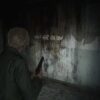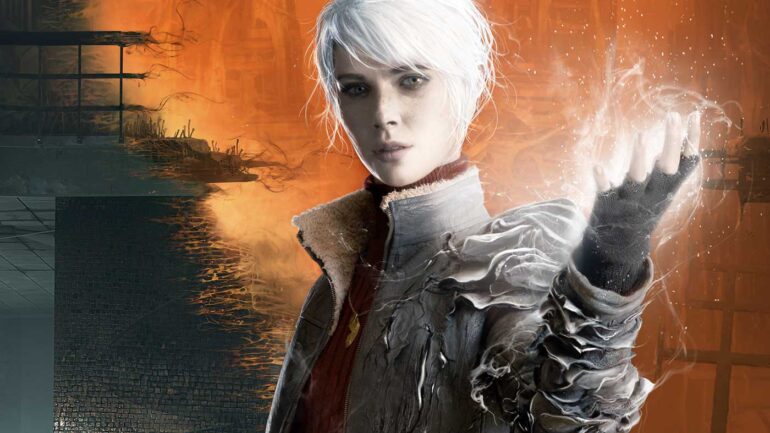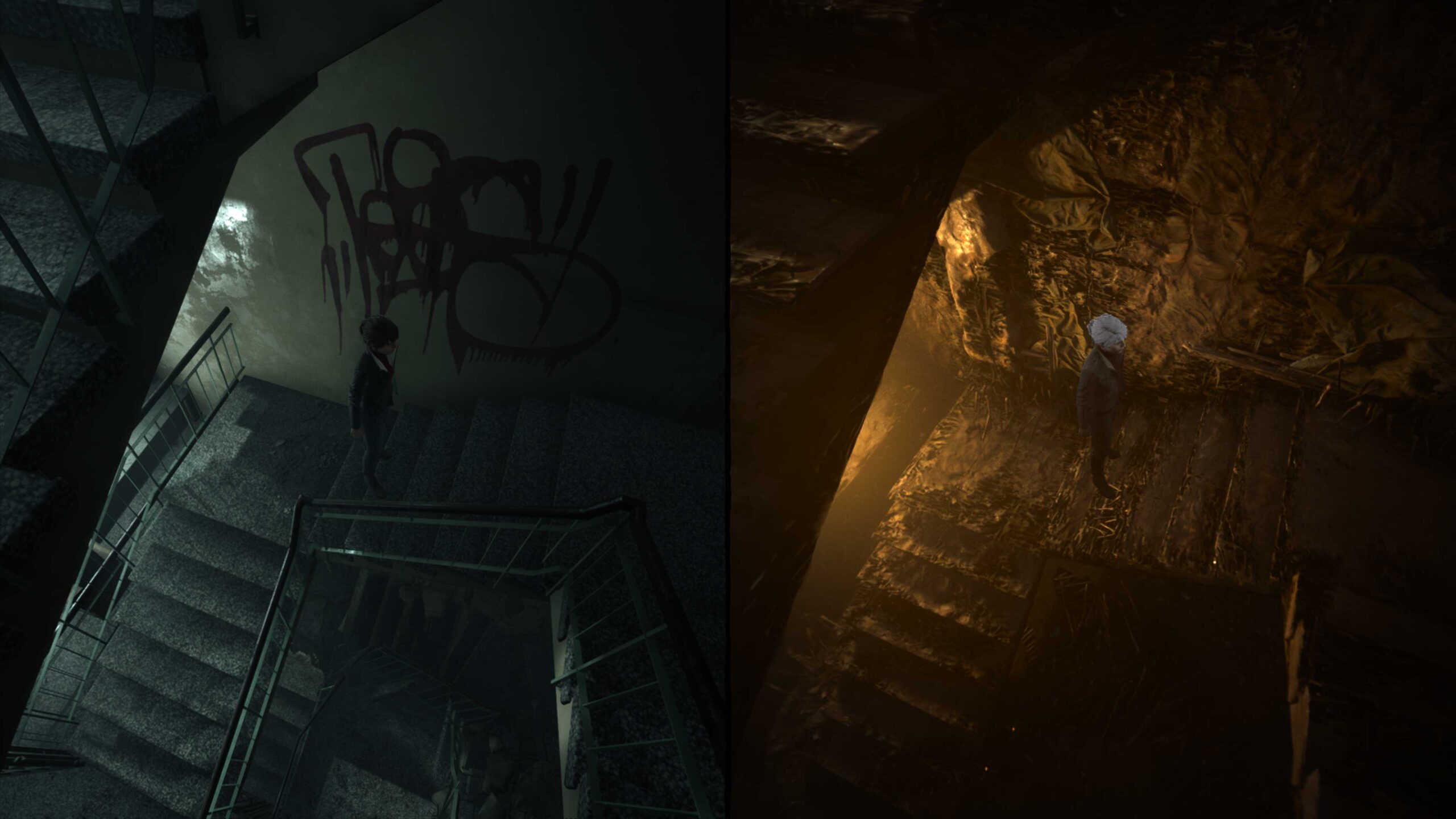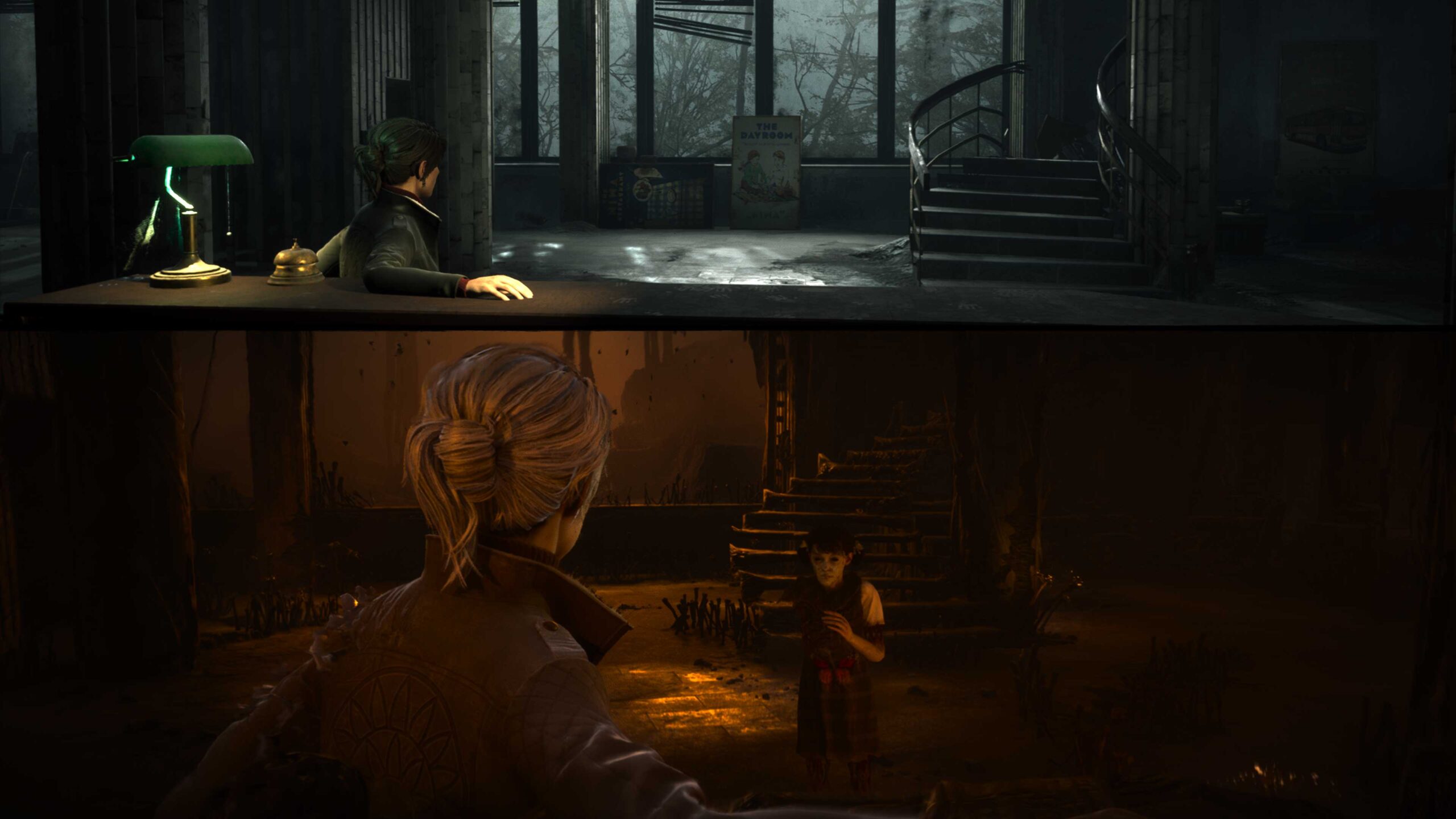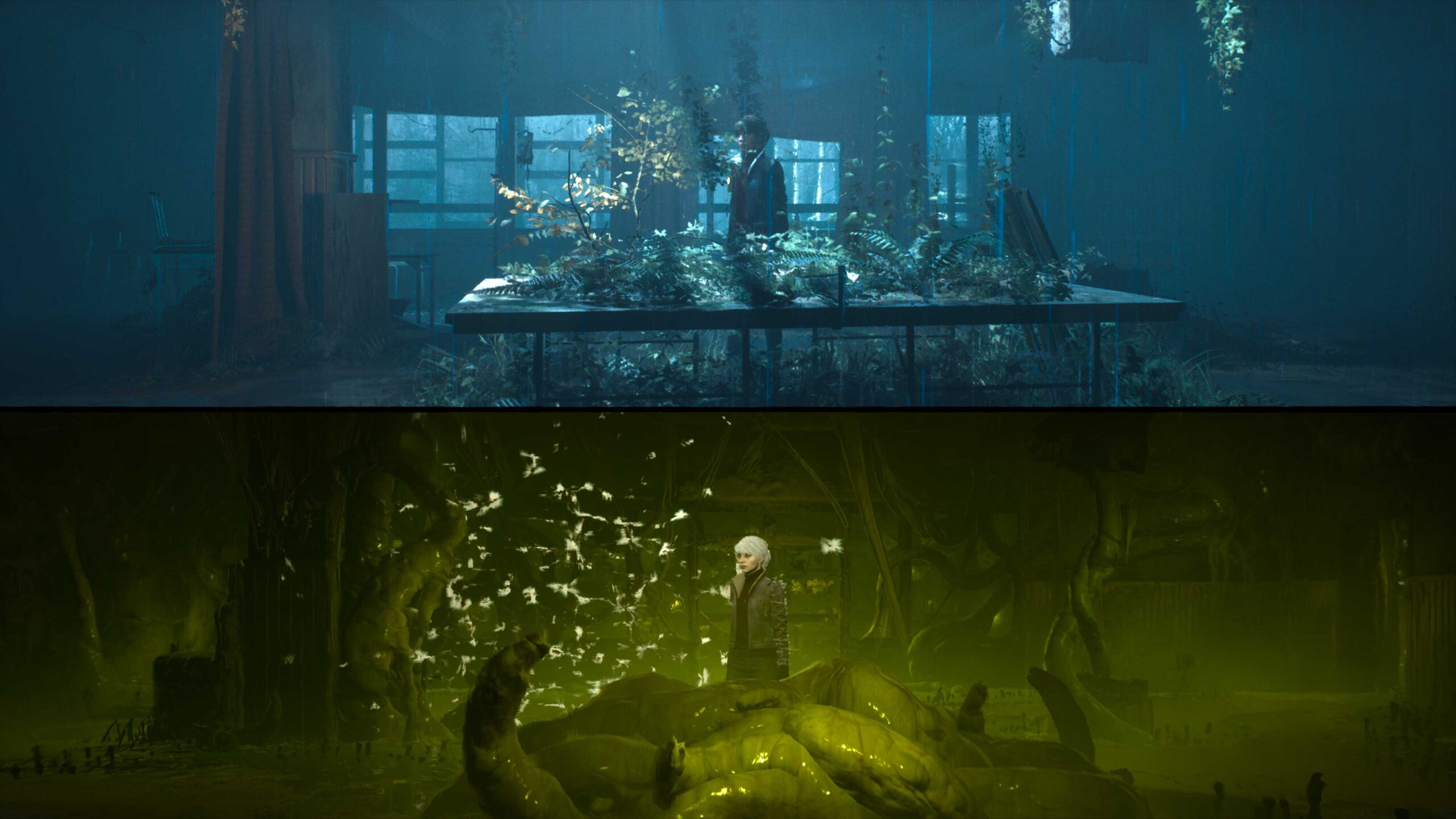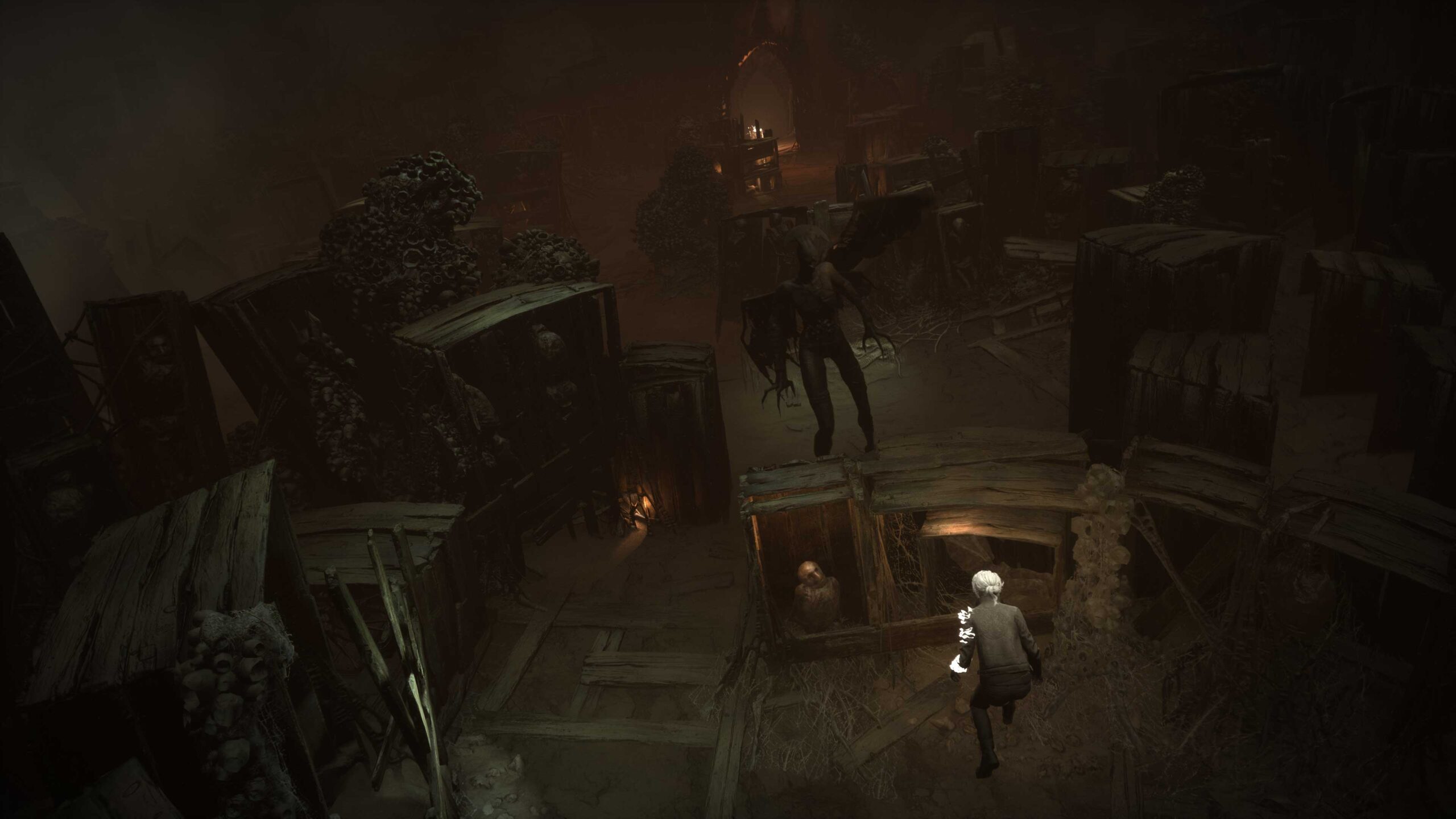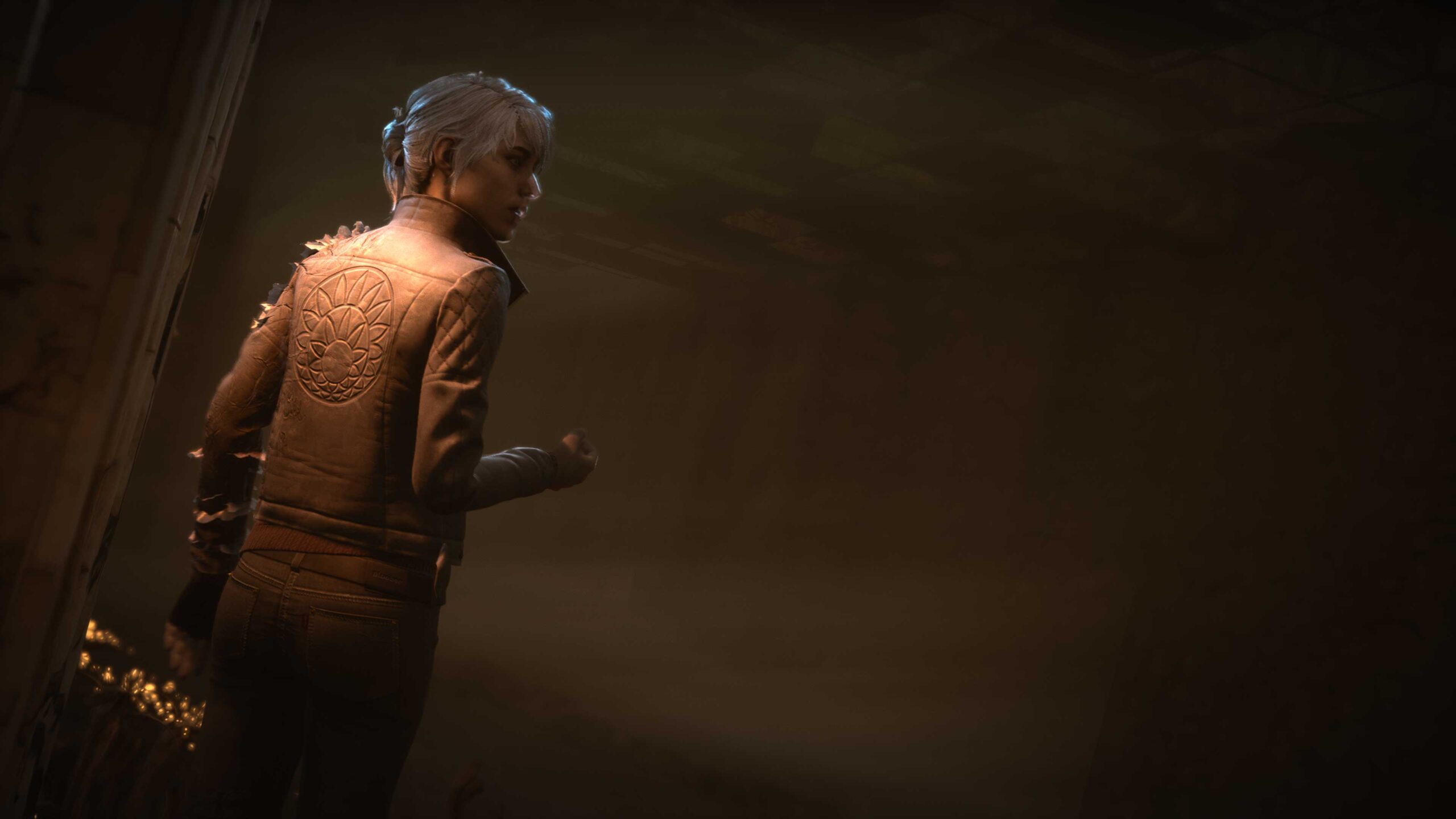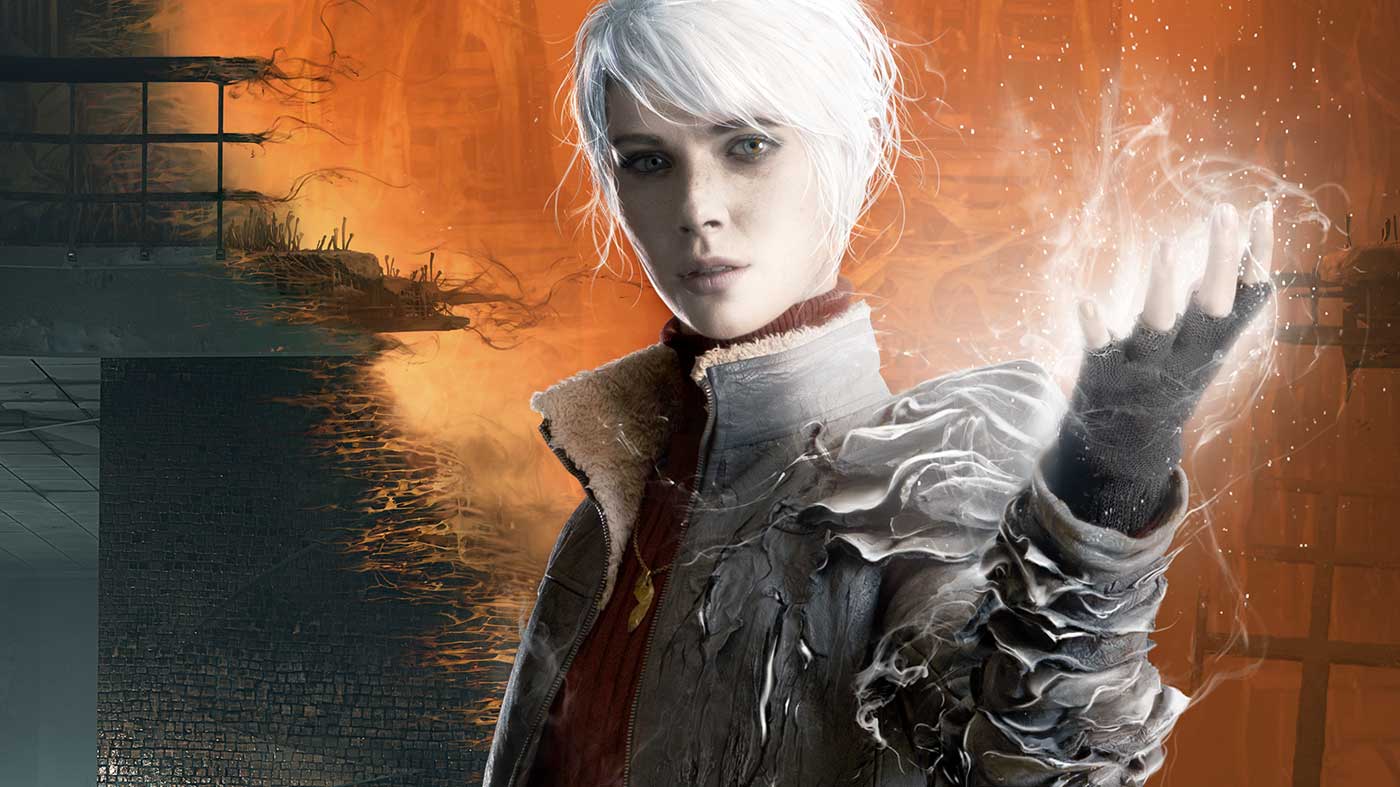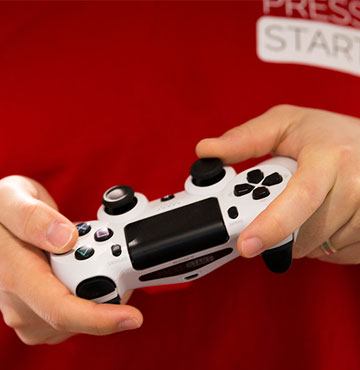It all starts with a dead girl. And a whole lot of ambition.
The Medium follows Marianne, a woman with the power to travel to and interact with the spirit realm. On the day where she must bury her father figure, Marianne receives a mysterious call from a stranger who claims to know what she is and understand her as well. Intrigued, she accepts his invitation to travel to Niwa Hotel, abandoned following a deadly massacre that’s become somewhat of an urban legend. Marianne learns that it was anything but an urban legend, with the man nowhere to be found.
From the get-go, it’s obvious that The Medium takes inspiration from games like Silent Hill, though more specifically Silent Hill 2. Both a blessing and a curse means that the plot is more concerned with providing a more oppressive atmosphere than an explicitly grotesque or horrifying one. But it also means its ground trod so much before. The story is compelling with a few nice twists and turns, but it does feel a bit tropey at times. More so to the point that it’s not only noticeable but a bit predictable.
One thing is obvious about The Medium as a game, and that’s the fact it’s developer Bloober Team’s most ambitious game yet. For the first time, the team has taken the action out from behind the players’ eyes and offered up a third-person viewpoint. The game also employs a fixed third-person camera angle to replicate the feel of classic survival horror games like Resident Evil or, more closely, Silent Hill. There’s also an inventory system, complete with examine and combine options and special powers too. It all sounds rather promising on paper.
The Medium is happy to co-opt all these little aspects of classic survival horror games but never really does much with them. Instead, what you get here is an experience that’s still strong but mostly reminiscent of other Bloober Team games. That’s not to say they’re bad, but the team has hung their game on some great and unique aspects that they’ve unfortunately failed to capitalise on appropriately.
The Medium’s big difference is the trademarked dual reality system, in which players will both see and control Marianne in both realities at once. While the Dark World trope is hardly anything new, the premise of affecting either of them in real-time feels like a true realisation of the next-gen consoles’ potential. Unfortunately, with The Medium, this mechanic doesn’t ever feel as ground-breaking as it could be.
First off, the game will only split into two realities “when there’s a story to tell” in the game, so it’s by no means a constant effect or toggle. Secondly, you control Marianne, but it’s a wholly synchronised experience – you control both realities simultaneously. While this means two realities are up on the screen, ultimately, you’ll always only have to focus on one, which seems to defeat the purpose of it all. It sounds harsh to say this visually spectacular feature is kind of pointless. But “doing one thing in one world to change it in the other” is such a done to death mechanic in video games that it doesn’t feel like it’s done any differently here.
What is a little bit more disappointing about The Medium is that it just starts to do exciting things with it’s puzzles and Marianne’s powers before just ending. Marianne has three unique powers – one is a shield that is only ever used to get through moths barriers, another is a blast that powers malfunctioning switches, and another sees Marianne go “out of body” to control her spirit self. Going out-of-body is the most used, where you control Marianne in her spirit form to get to areas that her other one can’t, though once again, it makes the dual reality visual feel a tad pointless.
Each of these powers is fuelled by spirit wells, which is the primary purpose of each puzzle you’ll find in the spirit realm. You either must restore a spirit well to use load your powers to progress or find one. There’s not a whole lot to the situations you’ll find yourself in with The Medium. There is one “puzzle” of sorts towards the end that I appreciated immensely, involving a mirror and a dollhouse, but otherwise it all feels a bit too simplistic. The game does play a little with using your spirit form to distract an enemy while your human form sneak’s past, but it is never really developed beyond that.
This is really what my big issue with The Medium is. It’s got a flashy story, a very flashy visual gimmick in its dual reality system, but it still suffers from the issues I’ve had with Bloober Team games in the past. It just feels a bit linear. The inventory system feels like a step in the same direction as Resident Evil or Silent Hill, but you’ll rarely find an item that you don’t use in the same room you found it in. There’s little to no opportunity for exploration or backtracking – especially in the Niwa, where you’ll spend most of your time. A wholly linear experience is par for the course for a Bloober Team game, but I’d hoped with the change in perspective that more might’ve changed.
This is perhaps best illustrated with the way the game handles the crux of its action. The main antagonist in the game is a creature known as The Maw. While I had apprehension when I heard Troy Baker voiced it, it’s one of his most unique and almost unrecognisable performances. But despite this, the sequences involving The Maw never quite ascend beyond the typical “run-away towards the screen while it chases you” or “sneak around, so it doesn’t see you” type of encounter. They feel like the chases from Layers of Fear 2 or the stealth segments of Observer, just rehashed.
Something that horror fans might find polarising is just how scary it is too. Bloober has, in the past, given me games that have had me nervous about turning a corner or opening a door. The Medium, on the other hand, intrigued me from beginning to end. But not once was I scared of it. There’s only one jump scare in the game’s twelve (or so) hour run on the plus side. But on the other, I was never genuinely terrified. Perhaps it’s because Marianne speaks to herself frequently, sometimes even making quips. It just feels like less is more, and Marianne’s need to incessantly comment on everything took me out of the moment regularly.
But there’s one thing that is indisputable about The Medium, and it’s that it’s a real looker. While the team acknowledges they’ve taken inspiration from dystopian surrealist Polish artist Zdzislaw Beksinski, I feel like they’re underselling themselves here. The Medium has some phenomenal cinematography, which is only helped by the fixed angle, third-person camera. The cinematography is striking, the art direction is macabre, and the world as a whole is ominous and suppressing. If this is just the beginning of what we can do with next-gen hardware, colour me excited.
But of course, we can’t not talk about the soundtrack from famed Silent Hill composer Akira Yamaoka. Yamaoka’s work on The Medium is just what you’d expect. It’s a dark and ambient industrial-influenced score that nails the mood of the spirit world perfectly. But while I enjoyed the flashbacks to Silent Hill that this inspired, I’d be remiss to not mention the tracks from Bloober’s composer, Arkadiusz Reikowski. His work does a great job to help sell some of the more dramatic scenes in the story. It’s a great original score overall, even if sometimes it feels like it fades more to the background than the foreground.
But perhaps that’s the point.
It might sound that I’ve been incredibly harsh on The Medium, but I’d be lying if I said I didn’t enjoy it. From the get-go, it grabbed me with its intriguing story. At the same time, it’s bold choice to use fixed-camera angles inspired nostalgia for old-school horror in me that I hadn’t felt for many years. It just, as a game, hasn’t moved on from the mechanics that we’ve seen in games like Layers of Fear, Observer, and even Blair Witch that stop it from being all that it could be.
THE XBOX SERIES S|X VERSION OF THIS GAME WAS PLAYED ON AN XBOX SERIES X FOR THE PURPOSE OF THIS REVIEW. A DIGITAL REVIEW CODE WAS PROVIDED BY THE PUBLISHER.
